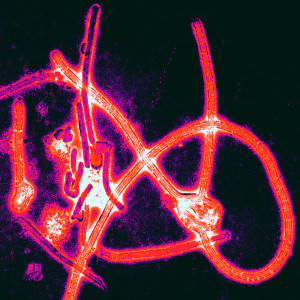Ripudaman K Bains is the Assistant Editor of Genome Biology, and the in-house editor of the journal’s special issue on the ‘genomics of infectious diseases’

In recent months, infectious diseases have been at the forefront of public attention. The deepening Ebola crisis in West Africa has now claimed nearly 6,000 lives, and although the international response is increasing the disease continues to strain already overextended medical infrastructure in affected countries.
It is perhaps surprising that Ebola is officially classed as a ‘neglected tropical disease’. The 2014 outbreak is the worst on record; between 1976 and 2013 there were 26 outbreaks of the virus, almost all of which occurred in sub-Saharan African nations, resulting in a total of 1,716 cases.
Neglected tropical diseases: still overlooked
Diseases are defined as neglected if they are overlooked by drug developers, government officials and the news media, unless they cause outbreaks that kill large numbers of people. A recent example is the difference in the amount of news attention that the Ebola outbreak has garnered in comparison to the current Chikungunya outbreak that is estimated to have infected over 900,000 people throughout the Americas.
Perhaps most notably, neglected diseases disproportionately affect destitute people, the so called ‘bottom billion’ – or more accurately, the poorest 1.6 billion of the world’s population. The World Health Organization officially lists 17 neglected tropical diseases, which are endemic in 149 of the world’s 196 officially recognized countries. In light of these figures, it isn’t surprising that there is increasing political pressure to increase funding to prevent and cure diseases that affect nearly 23% of the world’s population in 76% of its countries.
Before the increased amount of political pressure, the development of new drugs and diagnostic methods for the treatment of neglected tropical diseases was almost non-existent. The ‘World Intellectual Property Organization’ (WIPO) summarized the attitude to drug development for neglected tropical diseases as ‘market failure’, or non-profitable.
The WIPO’s description is not an overstatement: only 10% of global research and development resources were allocated for neglected diseases between 1975 and 2000, and only 13 new drugs were approved for their treatment within this time period.
The fight goes on

Despite the long-standing problem of a lack of investment into developing cures for neglected tropical diseases, researchers engaged in infectious disease research are making an impact.
A recent Genome Biology study by Pardis Sabeti and colleagues has presented cheap and accurate methods for the rapid detection of viruses, including Lassa and Ebola viruses. The clever aspect of this method is that the authors have optimized existing tools for the diagnosis of deadly viruses, and they have already demonstrated the utility of the method to examine the origin of the current Ebola outbreak.
In the drive towards ever more sophisticated technologies, this work is a humbling reminder that the optimization of existing technologies can be an innovative and affordable option for use in endemic regions.
Also in this month’s Genome Biology, Julian Hiscox and colleagues use genomic approaches to elucidate how Ebola virus can cause infection in a naïve host. The work cleverly uses genomics to map how the virus can cause an infection in guinea pigs, by forcing infections, and then watching the evolution and adaptation to a naïve host in real-time. This study provides important insights into how naïve hosts can become susceptible to highly pathogenic agents.
The publication of these articles is particularly timely given the current outbreaks of Ebola in West Africa and Chikungunya fever in South America. It is extremely unfortunate that it took a devastating outbreak to bring neglected tropical diseases to the forefront of public attention, given the devastation that they cause to nearly 2 billion people worldwide. It is encouraging, however, to see that research into these diseases in increasing, and that they may yet be defeated.
—
Both of these papers form part of this month’s special issue of Genome Biology, which is dedicated to the genomics of infectious diseases; this issue, which is published in collaboration with Genome Medicine, showcases cutting-edge and emerging research areas in this field.
Ripudaman Bains
Ripu joined BioMed Central in August 2013 initially as an Editor for Genome Medicine; she joined Genome Biology in January 2014 where she is currently Senior Editor.
Latest posts by Ripudaman Bains (see all)
- A ticking time bomb? Ebola and the neglected tropical diseases - 27th November 2014
One Comment